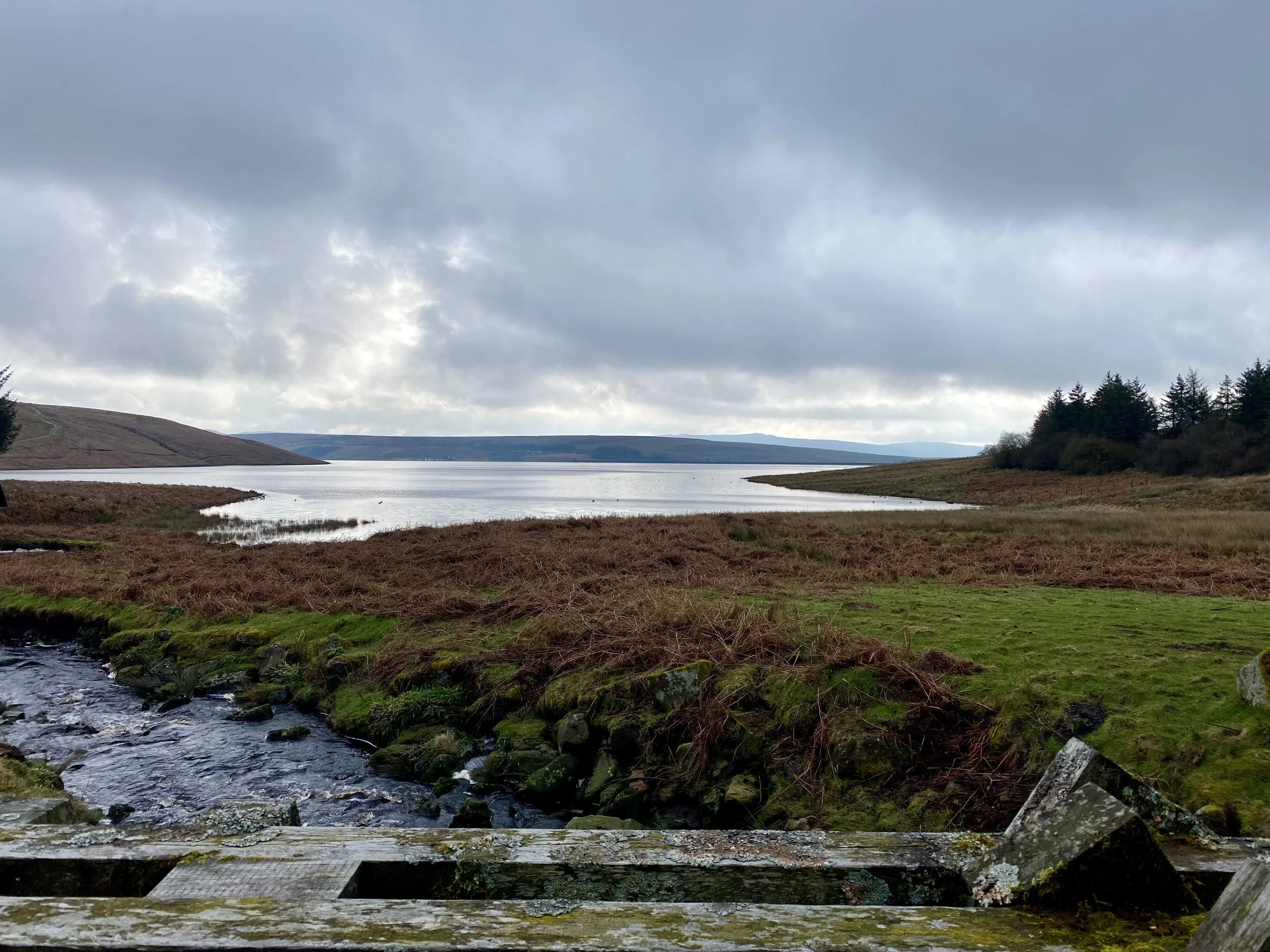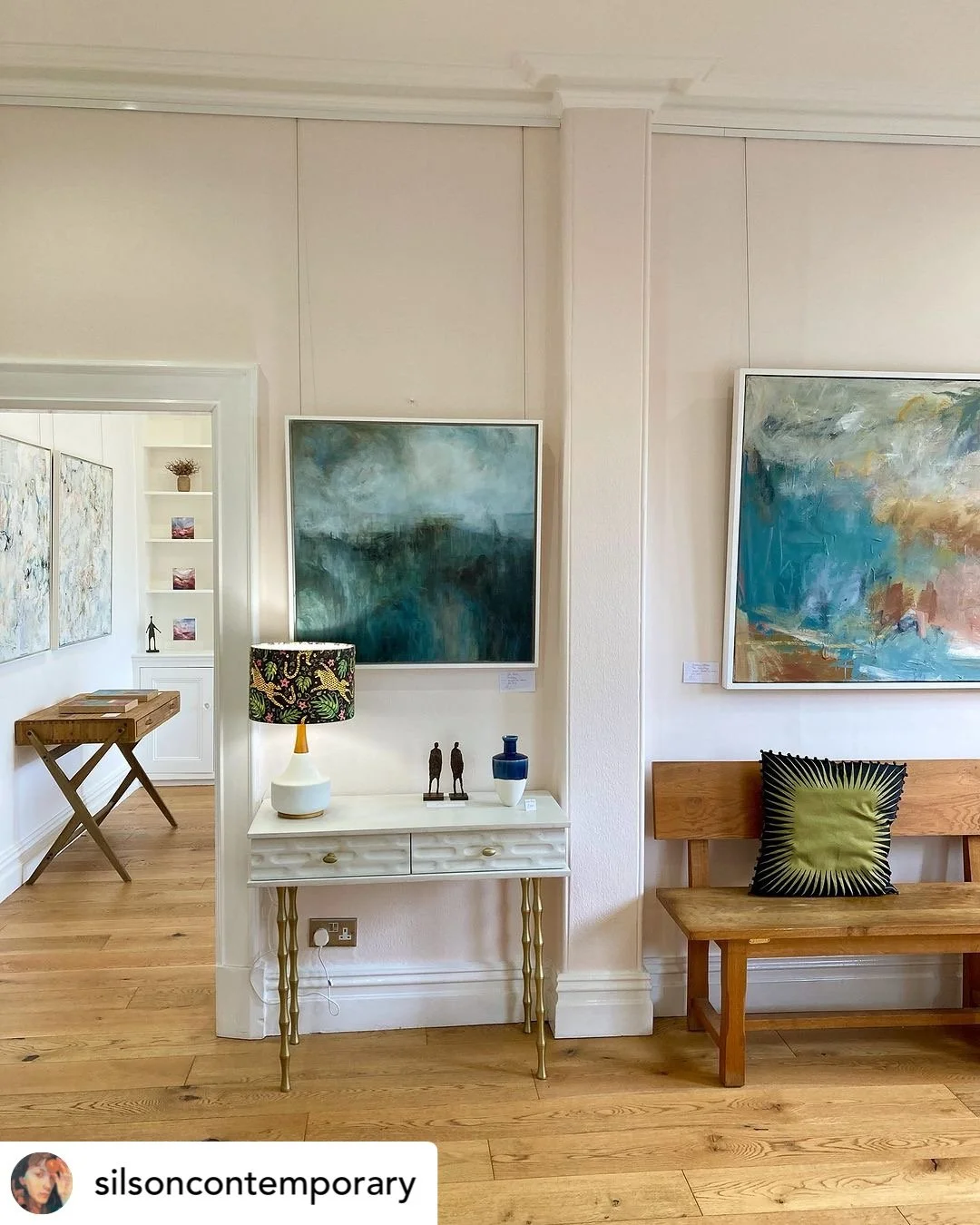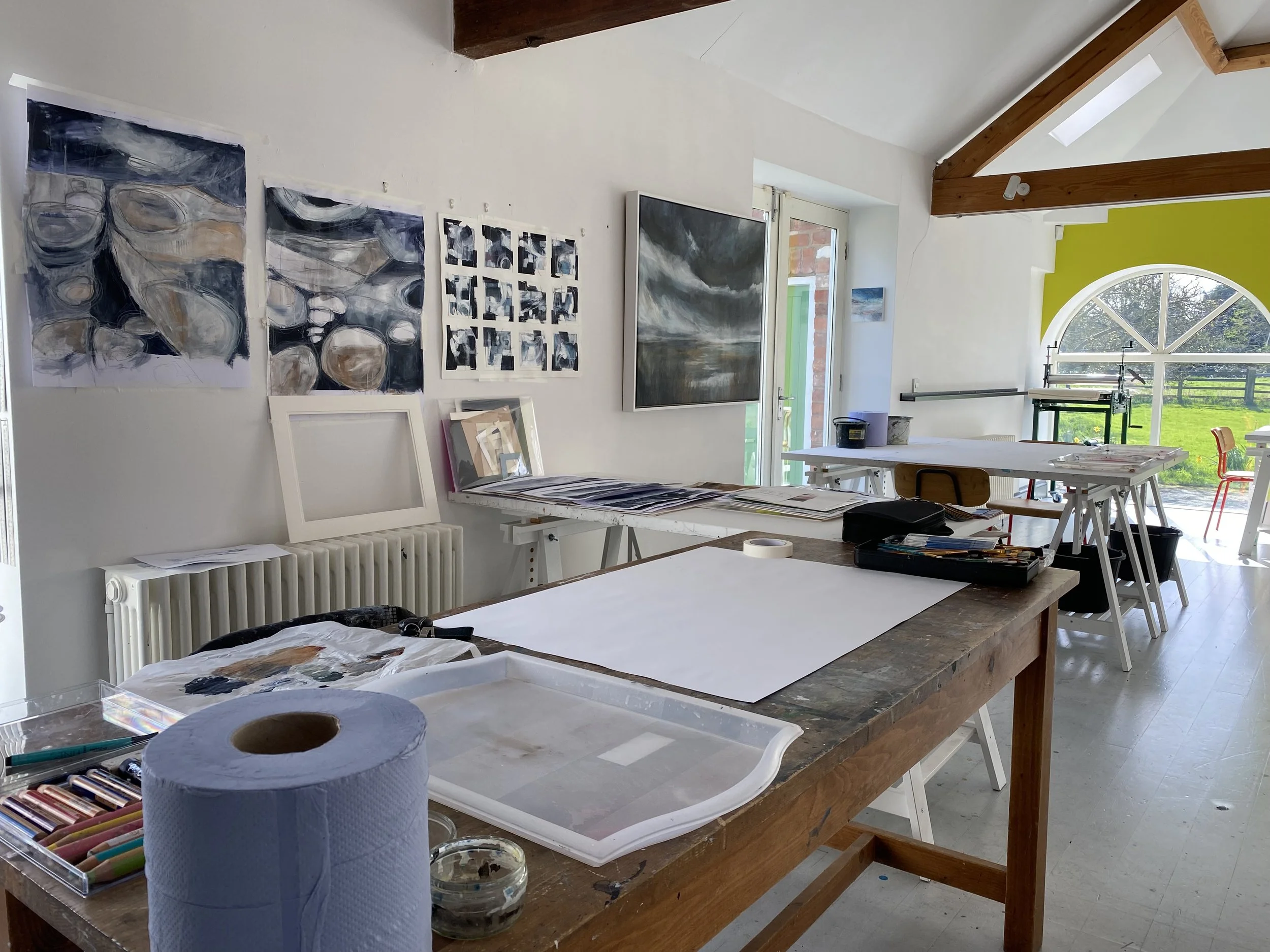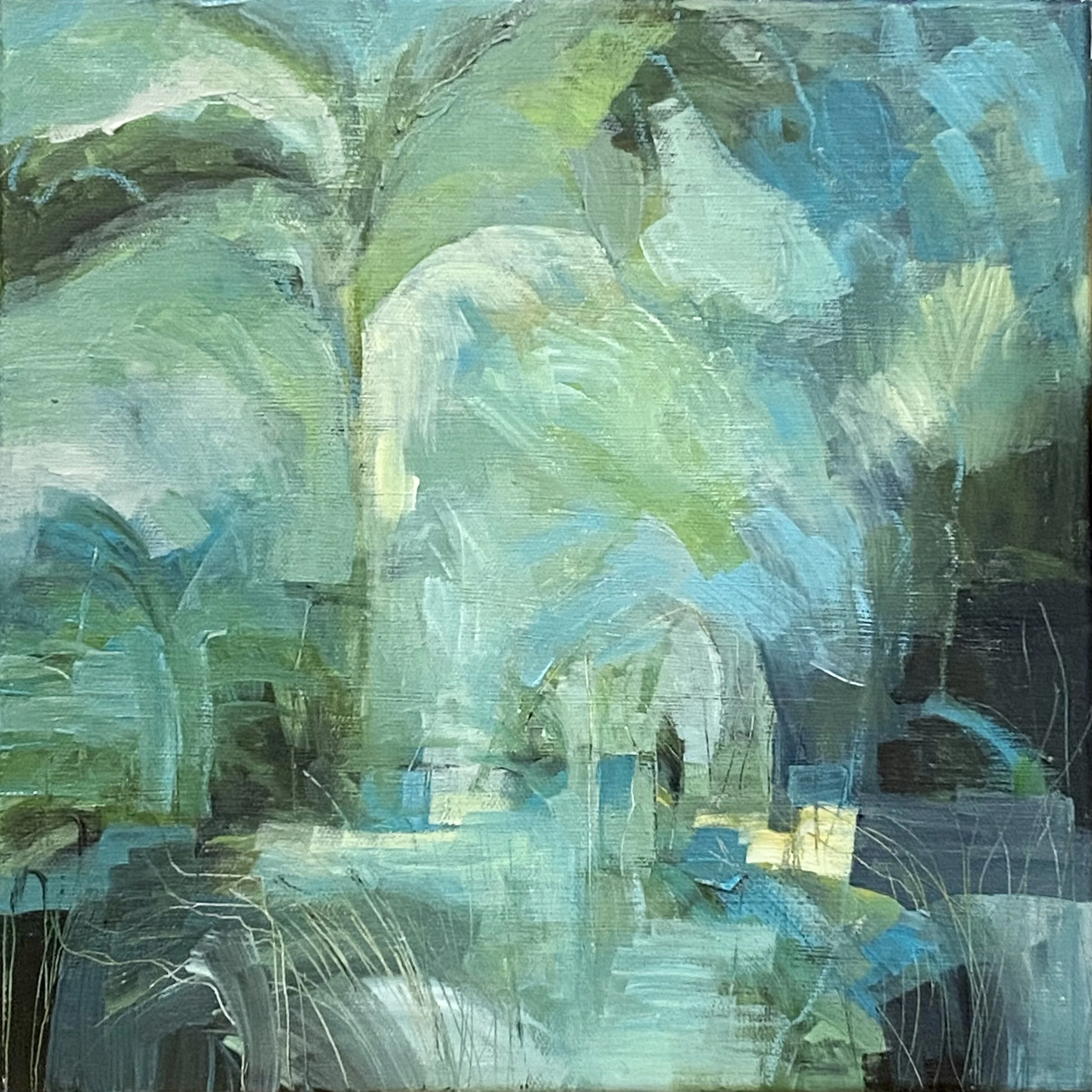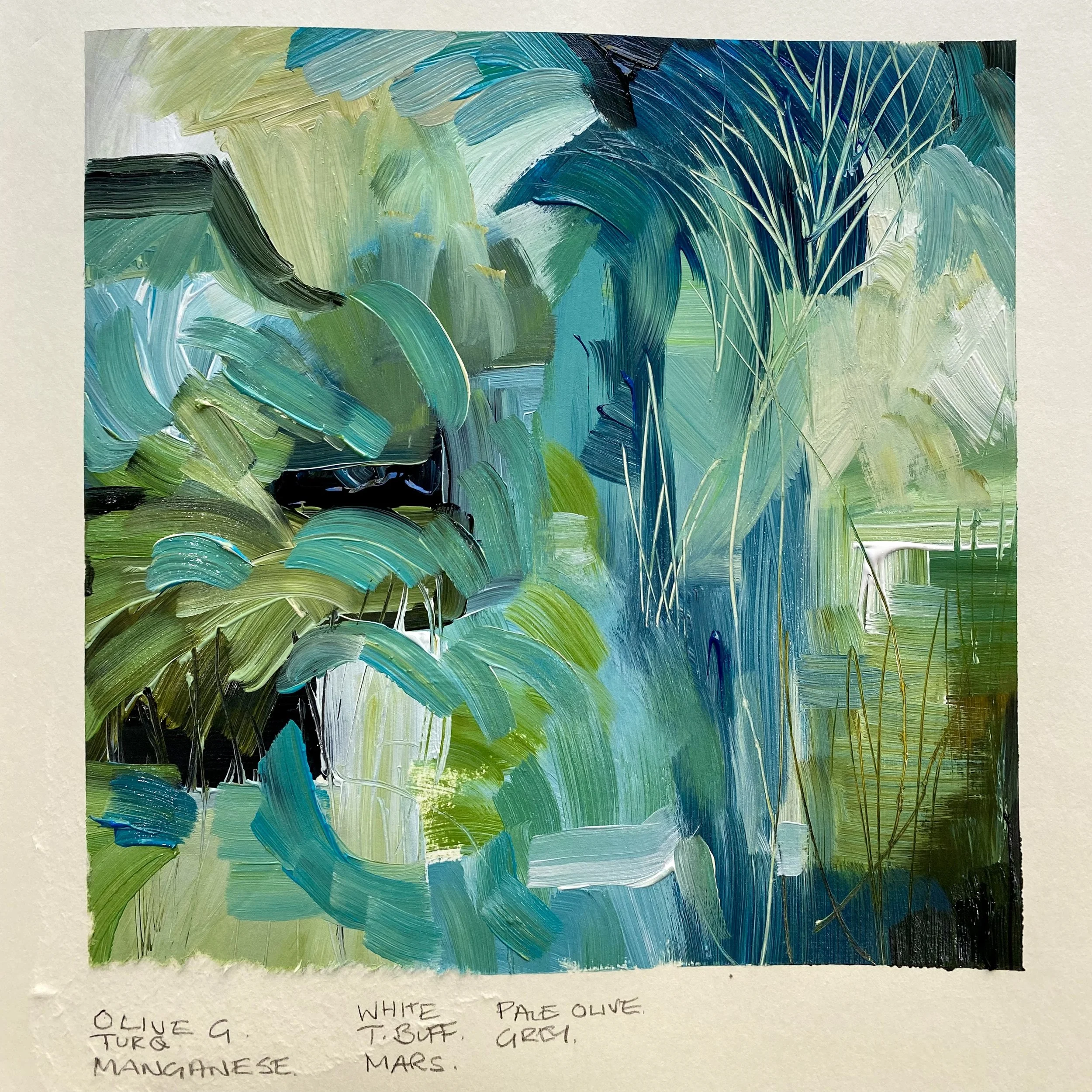Newsletter: March 2024
Grimwith Reservoir in early March, still some snow on the hills around and very cold.
The photo above shows one of the very brief interludes between rain showers and downpours this month…it’s just been relentless. Enough already with the rain…please!
It’s been a busy month; trips to galleries and some much needed family time in the Lake District, we walked and talked, and stopped frequently to look at the beautiful scenery, but there was no let up from the wet stuff! This time there was no painting either; I just wanted to focus on catching up and enjoying the company…but you never know what might percolate through over the next few months…that is what happens, subconsciously it seems, images, ideas, colours and textures appear as if from nowhere, and then when I sit back to think about them, I can usually spot where they’ve come from. It can be months even years before.
On the way back, we stopped off to catch up with the lovely guys at The Northern Lights Gallery, in Keswick. I’ve recently sold a couple of large paintings through them, to a local hotel, and the wonderful thing about having work in public spaces, is that you can visit it!
It was brilliant to see the two fell paintings, so beautifully installed and in a wonderful setting. Many thanks to Tim Fisher from Northern Lights gallery and the team at Lodore Falls Hotel, for doing such a great job!
Two of my abstracted landscape paintings in situ at the wonderful Lodore Falls Hotel near Keswick.
Exhibition wise, there is still just a little time to catch the Winter/ Spring show at Silson Contemporary in Harrogate and online…the show features a wonderful bunch of women artists, there are still a few of my pieces available and the show is really well worth a look, on this link, or better still in the flesh : https://silsoncontemporaryart.co.uk/winter-spring-show-2024-28th-january-6th-april/
The rest of this month has been about getting ready to run a couple of courses at Lund Studios. I’m doing a three day course at the end of next month and my one day has just happened.
Pre course chaos!!
I genuinely love running courses, but they are very time-consuming; it always takes me forever to put all the resources together, make test pieces and samples, not to mention packing everything, including a whole lot of artist materials and supplies…it always looks and feels a bit like moving house! And then of course you have to do the whole thing in reverse when you pack up!
I really did have a wonderful time on the 23rd March; I know a lot of the people on the course are subscribers, and get this newsletter, so thanks for being such a lovely group, and making the day so enjoyable!! So enjoyable in fact, that I totally forgot to take photos during the day.
We were looking at abstraction in various forms and different degrees…this is something I get asked about a lot, so I thought I’d put together a couple of ideas to think about; ideal if you’re on a journey to become more abstracted in your own work, and also useful I hope for collectors and potential collectors to make sense of something that can feel a bit baffling.
For me there are three key components of any piece of work:
External Sources-People and places, landscape, figure, still life etc…in fact this is whatever the artist is fired up by, the things they love, the things they notice in their daily lives…this could be the blues in an otherwise warm skin colour, textures of a ramshackle old building, or the openness and space of a wide expanse of deserted landscape.
Internal Sources-Your personal feelings, connections, interests, impressions; for me it’s about my connection to the landscape, the atmosphere, and the sensations of being there. Interestingly though, the artist’s internal source could actually be far more analytical, detached even.
Visual Language/ Materials and Techniques-this is where the physical aspect of making art combines with the intellectual and emotional ideas behind the work. It’s about the materials and techniques, selected and used by the artist and importantly, their own personal visual language. The way an artist makes marks in paint or whatever medium they use, is as individual as a finger print, and just as distinctive.
Alongside these three components, there are also three key ways of moving towards abstraction:
Firstly, and probably most importantly, you need to simplify and edit the world around you to make it your own, which means removing at least some level of detail.
Next you need to think carefully about the colour palette: the colours you use are a choice, they don’t need to be literal or realistic, they can be designed to communicate an emotion or feeling, to evoke a season or just to give a subtle or vibrant appearance. Working with a limited colour palette can be a great idea, and often produces really strong images and successful work.
Thirdly, at least for me a really rich and rewarding picture surface is extremely important: this requires expressive and inventive mark making, and often complexity and interest created by using layers and texture. For instance,, most of my work is made up in a huge number of layers; I loose count of how many, but lots and I love to use incised marks to draw through the paint surface.
*The whole process often starts with something very simple but important; playful experimental marks which explore shapes and colours, value and ideas…like these below. ⬇️
To illustrate these ideas I thought I’d use a couple of pieces of my work> This is a painting called, A Place Among The Stones-about high fields with scattered rock formations.
You can see, I’ve edited the landscape down into a series of quite geometric shapes and forms.
The colour scheme is deliberately limited, fresh and spring like; mostly blues and green with little pops of a reddish brown, with dark shadows. In places the colours are overlaid to create depth and complexity; opaque almost chalky colour is applied on top of related colours with a different value.
in contrast to the flat areas of colour there are glazes and incised details, which ‘ground’ the piece and make it specific.
The painting on the left is about a botanic garden with dappled light and the shapes of palm trees and ferns.
In this one, you can see that detail has been reduced to put the emphasis firmly on colour and value…and the colour palette is very limited-here the paint is applied in a more expressive and looser style, with a great deal of overlaying of colour.
There’s a lot of emphasis on mark making, including incised detail, where the paint surface has been carved away with a sharp tool to create fine lines and marks, and there are some oil pastel marks in the mix too….in this picture I used an etching needle to make the incised marks.
To give a feel for my process I’m also showing this small study above…this is my visual note, one of my starting points for the painting above. I often like this stage as much as the more considered completed painting, and I’m particularly fond of this one!
If I ever get the time, which is the problem, I was wondering about adding a simple workshop/pack as an online offering, giving lots of strategies and guidance on working towards abstraction…still very much a thought, but if you’re interested it would be useful to know!
Just add a comment or send me an email when you read this.
I have had so little painting time this month, but I’m excited to get going on some new work; the canvases are piled high in the studio and I just need to get on with gesso-ing, and sanding, so I can make a start. This is my plan for the Easter weekend, maybe with a little chocolate thrown in too!
I think that’s about it for this month, just drop me a message if there is anything you would like me to cover, or if you have any queries-keep in touch, I love getting your lovely comments and feedback!
However you are spending yours, I hope you have a lovely time over Easter, and a happy and creative month ahead, oh and fingers crossed, a bit less rain!
Jo XX
All content, text and images ©Jo York 2024
